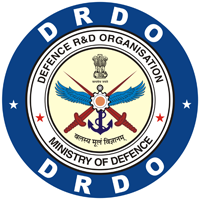Effectiveness of Reinforcement and Lining in Concrete Target Impact Resistance
Numerical study
DOI:
https://doi.org/10.14429/dsj.20270Keywords:
Concrete, Steel liner, Missile impact, Compressive strength, Flat and hemisphere nose-shaped missilesAbstract
This study aims to understand whether introducing a steel liner at the rear face of concrete is beneficial compared to reinforced concrete in improving impact resistance when subjected to flat and hemisphere nose-shaped hard missiles. The paper presents the numerical results of penetration, perforation, and ballistic limit of plain and reinforced concrete targets (1200 mm x 1200 mm x 180 mm) with and without steel liner. Numerical simulations are done using LS Dyna. The thickness of the steel liner varied from 2.25 mm to 4.5 mm according to the percentage of flexural reinforcement for 30, 40 & 50MPa unconfined concrete strengths. 12 mm diameter bars are used as flexural reinforcement spaced at a distance of 100 mm c/c. The geometric dimensions of the missile are 300 mm in length and 80 mm in diameter, and the missile’s mass is 11.75 kg. The findings revealed that because of its higher tensile strength, steel reinforcement was shown to decrease penetration depth, whereas steel liners greatly enhance ballistic limits. Plain Concrete with Rear Face Liner PCL2.25 had a 27.7 % higher penetration depth than Single Mat Reinforced Concrete (SMRC) at 100 m/s for 1.75 % reinforcement, while PCL4.5 demonstrated a 22 % higher penetration than Double Mat Reinforced Concrete (DMRC) for 3.5 % reinforcement. PCL4.5 demonstrated a 50 % greater ballistic limit compared to SMRC for a flat nose and a 9 % higher ballistic limit for a hemisphere nose. These results show that steel liners are an alternative for RC in increasing the impact resistance of concrete structures in crucial applications like nuclear and military facilities because of their improved ballistic limits and perforation resistance.
Downloads
Published
How to Cite
Issue
Section
License
Copyright (c) 2025 Defence Scientific Information & Documentation Centre (DESIDOC)  Where otherwise noted, the Articles on this site are licensed under Creative Commons License: CC Attribution-Noncommercial-No Derivative Works 2.5 India
Where otherwise noted, the Articles on this site are licensed under Creative Commons License: CC Attribution-Noncommercial-No Derivative Works 2.5 India

